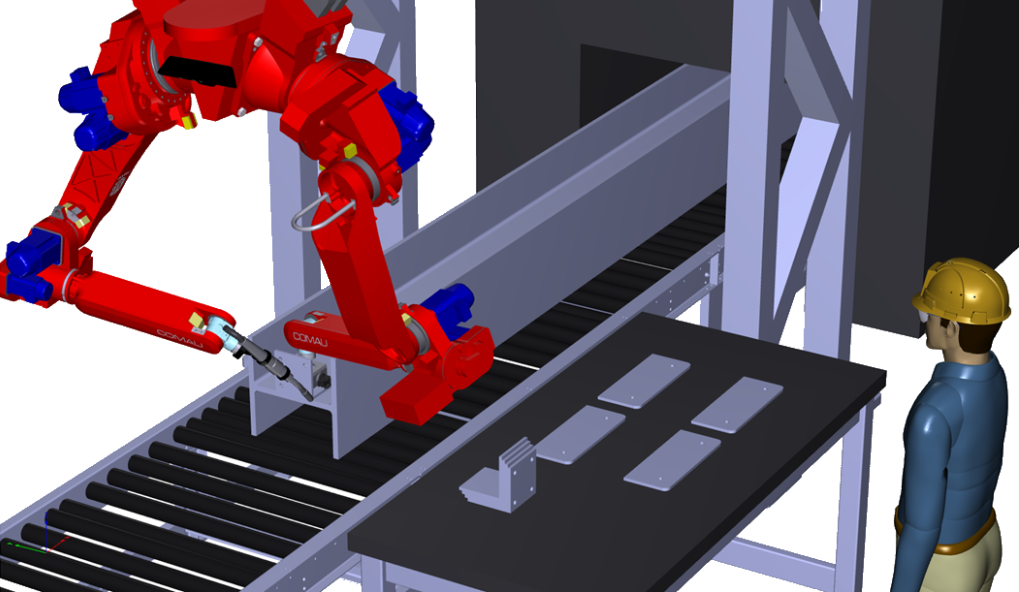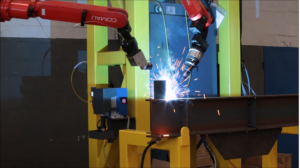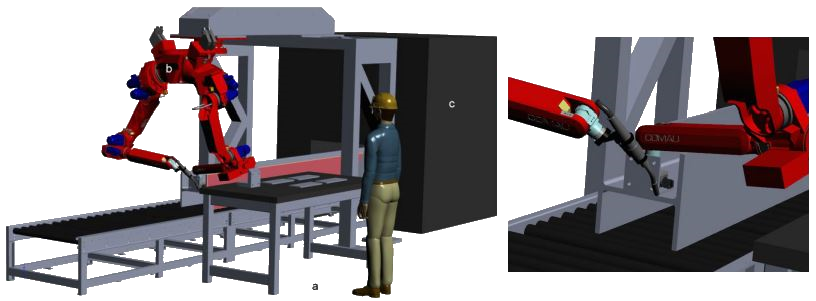Cooperative DuaL-Arm Robot for Structural Steel Fabrication

The participation of SARKKIS on the FP7 SMERobotics project.

- Seamless integration with structural detailing software (IFC/CAD).
- Advanced sensing to deal with geometric uncertainties and part localization.
- Assembly and welding system.
SARKKIS Robotics participates in FP7 SMErobotics project consortium (www.smerobotics.org) is the European Robotics Initiative for Strengthening the Competitiveness of SMEs in Manufacturing is set to bring cognitive robotics from vision to reality in a key segment of EU-manufacturing. This project is led by the Fraunhofer IPA, and involves 25 partners, including some of the best research institutions in Europe.
SARKKIS Robotics participates in Demonstrator 5 – CLARiSSA which stands for (Cooperative DuaL-Arm Robot for Structural Steel Fabrication) together with INESC TEC and NORFERSteel. This demonstrator will develop an innovative cooperative robot for welding operations in assembly tasks for structural steel fabrication. SARKKIS is in charge of the development of the software for reading structural steel project files (IFC 4.0) and advanced robot path planning.
Demonstrator scenario:
The structural steel construction pre-production is mainly composed of cutting and welding of substructures that are later assembled on site. Among these operations cutting, drilling, and marking present nowadays a reasonable level of automation, either using mechanical tools or thermal processes (plasma or oxy-fuel). On the other hand, the full automation of the welding operations is rare and requires machines that are not suitable for the SME scenario due to its complexity, upstream material dimensional control, cost, and space requirements.
 Figure 1. Examples of structural steel welded components from NORFER.
Figure 1. Examples of structural steel welded components from NORFER.
To address these issues the CLARiSSA project proposes the development of a dual-arm cooperative robot to perform the welding of small parts in beams in the SME context. It will be based on the SMERobotics D1 COMAU dual-arm robot with the following innovative characteristics:
- Seamless integration with structural detailing software (IFC/CAD) and advanced sensing to deal with geometric uncertainties and part localization.
- Human robot cooperation for handling uncertainties, such as the lack of CAD/IFC information p.e., and reduce complexity.
- Reduced footprint by enabling physical integration with existing equipment, namely sawing and drilling machines.
 Figure 2. CLARiSSA robot concept. (1) Existing drilling equipment (2) Human-robot interaction table (3) dual arm with advanced sensing capabilities.
Figure 2. CLARiSSA robot concept. (1) Existing drilling equipment (2) Human-robot interaction table (3) dual arm with advanced sensing capabilities.
Interim Results
Intelligent robotics, outstanding productivity!
Furthermore: sarkkis.robotics@sarkkis.com

